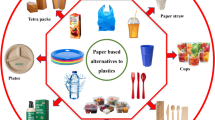Abstract
Over the last few years, the textile industry has developed different methods for obtaining fabrics and fibres with an antimicrobial action for use in hospital environments and for other purposes. This study evaluates the antimicrobial action of Bioactive®-treated fabric (BTF), a commercially available textile containing silver for use in healthcare environments. Unlike other biocides used in hospital fabrics, the prolonged use of silver has not been related to the appearance of resistant bacteria or cross-resistance to antibiotics, in spite of being extensively used in some treatments. Thirty-three hospital strains of bacteria were tested. This study showed the capacity of BTF for significantly reducing the number of microorganisms present, compared with the reduction observed in control fabrics (CF). The antimicrobial action of BTF was expressed as log10 reduction (LR) from an initial inoculum of about 105 colony-forming units (cfu). According to the bacterial species, an LR of between 2.6 and 5.0, and 4.1 and 5.0 (5.0 indicating total inhibition of bacterial growth) were observed, respectively, after 24 and 48 h for BTF. Acinetobacter strains were the most resistant to CF after 72 h (0.8 LR). All of the microorganisms, except two strains of Enterococcus faecalis, were totally inhibited after 72 h on BTF.

Similar content being viewed by others
References
Bergen LK, Meyer M, Høg M, Rubenhagen B, Andersen LP (2009) Spread of bacteria on surfaces when cleaning with microfibre cloths. J Hosp Infect 71:132–137
Hota B (2004) Contamination, disinfection, and cross-colonization: are hospital surfaces reservoirs for nosocomial infection? Clin Infect Dis 39:1182–1189
Andersen BM, Rasch M, Kvist J, Tollefsen T, Lukkassen R, Sandvik L, Welo A (2009) Floor cleaning: effect on bacteria and organic materials in hospital rooms. J Hosp Infect 71:57–65
Neely AN (2000) A survey of gram-negative bacteria survival on hospital fabrics and plastics. J Burn Care Rehabil 21:523–527
Borkow G, Gabbay J (2008) Biocidal textiles can help fight nosocomial infections. Med Hypotheses 70:990–994
Malnick S, Bardenstein R, Huszar M, Gabbay J, Borkow G (2008) Pyjamas and sheets as a potential source of nosocomial pathogens. J Hosp Infect 70:89–92
O’Hanlon SJ, Enright MC (2009) A novel bactericidal fabric coating with potent in vitro activity against meticillin-resistant Staphylococcus aureus (MRSA). Int J Antimicrob Agents 33:427–431
O’Brien J, Wilson I, Orton T, Pognan F (2000) Investigation of the Alamar Blue (resazurin) fluorescent dye for the assessment of mammalian cell cytotoxicity. Eur J Biochem 267:5421–5426
Mariscal A, Lopez-Gigosos RM, Carnero-Varo M, Fernandez-Crehuet J (2009) Fluorescent assay based on resazurin for detection of activity of disinfectants against bacterial biofilm. Appl Microbiol Biotechnol 82:773–783
Curtis LT (2008) Prevention of hospital-acquired infections: review of non-pharmacological interventions. J Hosp Infect 69:204–219
Monteiro DR, Gorup LF, Takamiya AS, Ruvollo-Filho AC, de Camargo ER, Barbosa DB (2009) The growing importance of materials that prevent microbial adhesion: antimicrobial effect of medical devices containing silver. Int J Antimicrob Agents 34:103–110
Gao Y, Cranston R (2008) Recent advances in antimicrobial treatments of textiles. Text Res J 78:60–72
Neely AN, Maley MP (2000) Survival of enterococci and staphylococci on hospital fabrics and plastic. J Clin Microbiol 38:724–726
Speert DP, Campbell ME (1987) Hospital epidemiology of Pseudomonas aeruginosa from patients with cystic fibrosis. J Hosp Infect 9:11–21
Doggett RG, Harrison GM, Stillwell RN, Wallis ES (1966) An atypical Pseudomonas aeruginosa associated with cystic fibrosis of the pancreas. J Pediatr 68:215–221
Jawad A, Seifert H, Snelling AM, Heritage J, Hawkey PM (1998) Survival of Acinetobacter baumannii on dry surfaces: comparison of outbreak and sporadic isolates. J Clin Microbiol 36:1938–1941
Rutala WA, Setzer Katz EB, Sherertz RJ, Sarubbi FA Jr (1983) Environmental study of a methicillin-resistant Staphylococcus aureus epidemic in a burn unit. J Clin Microbiol 18:683–688
Wilson JA, Loveday HP, Hoffman PN, Pratt RJ (2007) Uniform: an evidence review of the microbiological significance of uniforms and uniform policy in the prevention and control of healthcare-associated infections. Report to the Department of Health (England). J Hosp Infect 66:301–307
Gabbay J, Borkow G, Mishal J, Magen E, Zatcoff R, Shemer-Avni Y (2006) Copper oxide impregnated textiles with potent biocidal activities. J Ind Textiles 35:323–335
Acknowledgements
This work was supported by the Consejería de Educación de la Junta de Andalucía and the Ministerio de Ciencia y Tecnología in the Programa General del Conocimiento. The authors wish to thank T. MacFarlane for his helpful suggestions while translating the manuscript.
Author information
Authors and Affiliations
Corresponding author
Rights and permissions
About this article
Cite this article
Mariscal, A., Lopez-Gigosos, R.M., Carnero-Varo, M. et al. Antimicrobial effect of medical textiles containing bioactive fibres. Eur J Clin Microbiol Infect Dis 30, 227–232 (2011). https://doi.org/10.1007/s10096-010-1073-1
Received:
Accepted:
Published:
Issue Date:
DOI: https://doi.org/10.1007/s10096-010-1073-1




